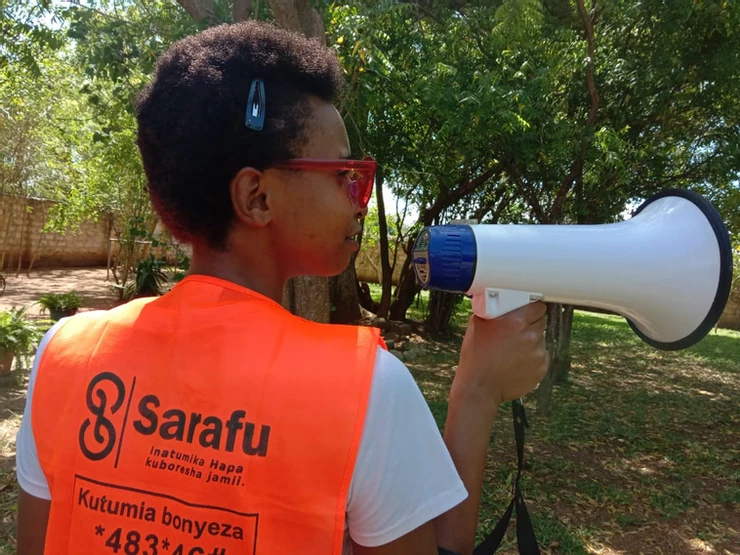How to Build a Vulnerable Household Support Network

Photo credit: Magdaline Mumbi a community network mobilizer.
Vulnerable Household Support Networks (VHSNs) In this post I'll describe a modality for social support and humanitarian aid such as cash transfer programming utilizing Community Inclusion Currencies (CICs).
Vulnerable households (VHHs)
VHHs in an area are identified via survey carried out by enumerators that seeks to understand which families in the community are most vulnerable and need support. Generally they are families where the head of household is a youth, elderly or very ill. See how Kenyan Red Cross works hard to identify vulnerable households..
Utilizing and developing Community Inclusion Currencies (CICs) can support, strengthen and identify social safety nets around vulnerable households.
A Community Inclusion Currency (CIC) like Sarafu is created and/or distributed regularly (similar to a basic income) in the area to VHHs as well as to all the households in the community in order to enable them to record mutual support among each other. Community members are asked to support the vulnerable families and each other with goods and services, using a CIC to record the support given.
For instance: a woman named Rehema who sells tomatoes may offer some tomatoes worth 20 KSH to a VHH. The VHH can record and show their appreciation by sending Rehema 20 CIC tokens using her feature phone. - Rehema can now also appreciate her own friends family and even tomato suppliers by sending them CIC in return for their support, goods and services.
Vulnerable Household Support Network Members (NMs):
those people that support the VHH by offering goods and services are traditionally not easy to objectively identify or quantify. By receiving a CIC a NM can record of their support in the whole community and around VHHs. This data is recorded securely and anonymously on a blockchain. Those NMs in the community that wish to share their blockchain address can be identified and capacity built / rewarded / supported by individual cash transfers.
Vulnerable Household Support Network - Identification:
Each user in the network has a unique address for their account on the blockchain that can be used to record every single CIC transaction. Any CIC transaction coming from a VHH can be viewed and audited as a record of support being offered to that VHH from members of the VHS-N.
For instance a VHH uses their feature phone and sends 100 CIC to appreciate Rehema the sender and record her offer of 100 KSH worth of maize flour as support.
That gives us a way to measure and rank how much support Rehema has offered. Indeed we can see the whole network of users that have offered VHHs support. If we look at this whole network we can get a sum of all the support a person like Rehema has offered to ANY vulnerable household - and we can even rank her support for VHHs among ALL the NMs (who are CIC users).
Say that Rehema’s amount of received CIC from VHHs (measuring her offers of maize flour) makes her in the top percentile of network members; Here in the example below we can see that she gave 46% of the total support in the community to a VHH.
| NM names | Support/month | percentage |
|---|---|---|
| Rehema Katans | 3000 CIC | 46% |
| Fran Miguu | 2000 CIC | 31% |
| Katana Busia | 1000 CIC | 15% |
| Gertrude Mia | 550 CIC | 8% |
| Total | 6550 CIC | 100% |
| Smith | John, Junior | 20 |
The four people or businesses have received 6550 CICs over a month because of the support they offered to vulnerable households. They can choose to offer their information to the public or an aid organization in order to be recognized and potentially rewarded.
Vulnerable Household Support Networks (VHSNs) can identified using Community Inclusion Currency (CIC) transaction data and give aid organizations concrete and auditable proof of community support (POCS).
In this way ANYONE offering support, goods or services to Vulnerable Households can be identified, acknowledged, rewarded to build their capacity. Because these CICs can continue circulating in the community as long as they are needed they can provide a long term community safety net, especially when Kenyan shillings are scarce or during or recovering from a crisis like COVID.
Note that there are MANY other ways to define and identify CSNs: Including voting systems as well as identifying specific areas of support, such as: farming, education or food and water.



